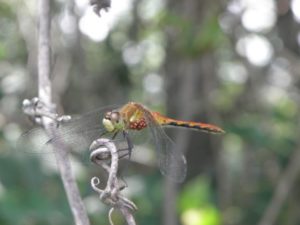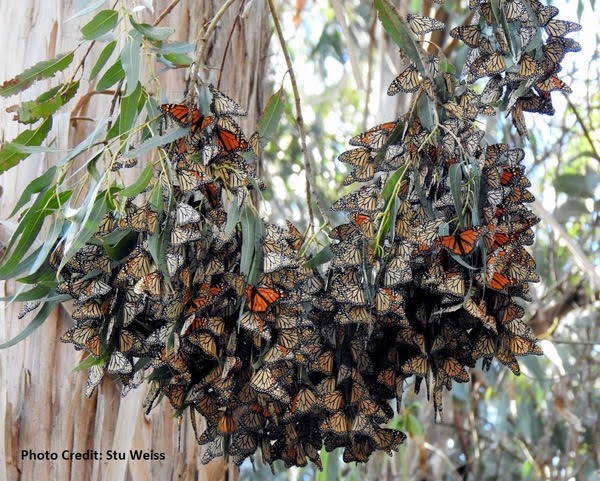Skeeter Eaters and Monarch Butterflies
By Glen Wunderlich
The well-drained, sandy loam soil in my remote vegetable garden has been the perfect full-sun location – a place where melons and root crops have flourished over the years. But, this wet and cool spring weather was not favorable to the pumpkin and melon plants, which thrive in warmer ground temperatures. Those early plants that managed to sprout lived for a week or so only to succumb to the uncooperative conditions. With our relatively short growing season, it remains unclear if the effort to replant them will result in anything fruitful. It’s been that kind of season.
At the same time, however, I was able to seed a few small food plots last week and the brassicas have already germinated. The tropical conditions we’ve experienced recently have been ideal and, if the sugar beets follow suit, these plantings should be deer magnets by fall.
With the rains have come mosquitos in large numbers, but interestingly the number of dragonflies is astonishing. Routine trail riding on an ATV kicks them into action at every turn by bunches. Dragonflies, which are similar to mosquitos in that they require standing water to hatch from eggs, are Mother Nature’s answer to mosquito control.

Perched Dragonfly Carrying Eggs
These bug-eyed, aeronautical acrobats are every outdoor person’s friends, because they have a voracious appetite for up to 100 mosquitos per day. That may not sound like much, but when one considers the sheer number of these predators this season, it has to make a difference.
Dragonflies possess extraordinarily sharp vision aiding them to detect movement of potential flying fast food. Courtesy of two huge compound eyes, the dragonfly has nearly 360° vision and can move their four wings to maneuver in any direction. Much like a bluebird, they’ll hunt from a perch for prey and can strike and return in less than 2 seconds.
Another friendly inhabitant of the area is the monarch butterfly. Monarchs are dependent on milkweed plants, which the butterflies’ larvae eat nearly exclusively. It is for this reason that I’ve left a section of land with weak soil to grow indigenous milkweed plants.
The soil is simply too sandy to produce anything but weeds, but the symbiotic relationship between the poisonous milkweed and the similarly poisonous monarchs is reason enough to let nature take its course.
The late-summer versions of monarchs are born to fly – all the way to Mexico or California and back! The monarchs begin to return north in the spring, feeding on nectar along the route home. Eggs are subsequently laid only on milkweed plants, and a new generation hatches. They flutter about without fear from birds which instinctively know to leave the poisonous beauties to themselves.
If that’s not enough reason to leave some milkweed to grow in selected areas, consider the fact that milkweed seed is in demand. In fact, a recent check of milkweed seed for sale on Ebay found that a half pound goes for $150.
Once the flowers are finished blooming, they form a pod of milkweed floss with the seeds attached. A piece of tape wrapped around the pod will keep it intact until it’s time to use it afield. That white floss material (with seed removed) is the perfect wind indicator for any hunter concerned with air currents. Better than any store-bought puffer or smoking iteration, the floss can be seen for a hundred yards or so giving the wise hunter an edge over scent-sniffing game.
Sometimes we have to look for that silver lining but it’s here among us.





